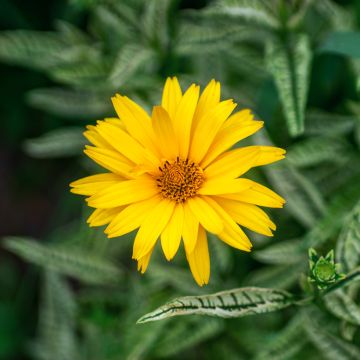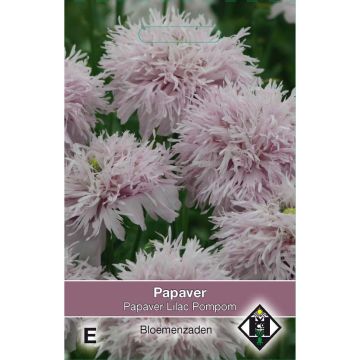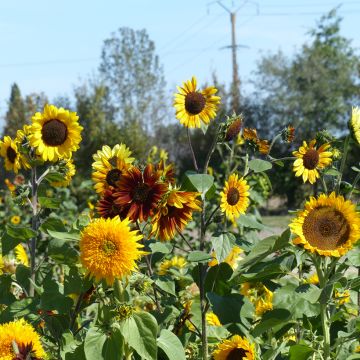

Mirabilis jalapa (Seeds)
Mirabilis jalapa (Seeds)
Mirabilis jalapa
Marvel-of-Peru, Four o'clock Flower
This item cannot be shipped to the selected country
Dispatch by letter from €3.90
More information
Schedule delivery date,
and select date in basket
This plant carries a 6 months recovery warranty
More information
We guarantee the quality of our plants for a full growing cycle, and will replace at our expense any plant that fails to recover under normal climatic and planting conditions.
Seed-only orders are dispatched by sealed envelope. The delivery charge for seed-only orders is €3.90.
Does this plant fit my garden?
Set up your Plantfit profile →
Description
The Four O'Clocks in this varied mix display flowers in various colours, including white, different shades of pink, red, yellow, and even orange and salmon, in varying proportions. The large black seeds of Mirabilis jalapa form an opulent, well-branched bush in three months, with glossy green foliage adorned with trumpet-shaped flowers. They open in the late afternoon, releasing a sweet fragrance, and close when struck by the sun. Not very hardy, but easy to sow and cultivate, Four O'Clocks are used in flower beds or large pots on the terrace.
Mirabilis jalapa, or Marvel of Peru, is a perennial herbaceous plant of the Nyctaginaceae family native to dry tropical regions of Central and South America, such as Guatemala, Mexico, Chile, and Peru. It develops a large black tuberized root, which has traditional medicinal uses in various regions of the world. The Four O'Clock is a perennial herbaceous plant 60 to 80cm (24 to 32in) tall, sometimes taller in hot climates and fertile soil, occupying a ground surface of 40 to 60cm (16 to 24in). It is not very hardy, but its rapid growth allows it to be grown as an annual. In our climates, it disappears in winter, blooms from June to October, but in the tropics, it is perennial and blooms all year round. The trumpet-shaped flowers, 4cm (2in) in diameter, open in the evening and close the next day when the sun hits them. They emit a sweet fragrance from dusk until the heart of the night. This particular characteristic has given the plant its name Four O'Clock: its scented flowers have fluorescent pigments that create patterns on the corolla and attract pollinating sphinx moths. The fruit, black in colour, appears at the base of the flower after it has fallen. The dichotomous stems are solid, quadrangular, fleshy, green to reddish in colour, thickened at the nodes, and bear opposite, ovate leaves with rounded or slightly cordate bases, glossy medium green, lighter on limestone soil and in full sun.
Four O'Clocks are used in flower beds, at the base of walls facing east (preferably south in the north). You will spend a good part of the summer in their company. They also grow very well in large, deep pots, ensuring regular watering and fertilization. Some ideas to accompany them: with Daturas, euphorbias, Lady's Mantle... This plant can be grown like a dahlia, and its tuber can be overwintered frost-free in a sandy mixture.
Report an error about the product description
Flowering
Foliage
Plant habit
Botanical data
Mirabilis
jalapa
Nyctaginaceae
Marvel-of-Peru, Four o'clock Flower
South America
Other Mirabilis seeds
Planting and care
Sowing:
Sowing Night-Blooming Cereus seeds is very easy:
Sow the Night-Blooming Cereus seeds from February to May, at 18-20°C (64.4-68°F) by lightly pressing the seeds into moist and well-draining compost. Place the seeds in a mini greenhouse or a polyethylene bag until germination, which usually takes 7 to 21 days. Do not exclude light, as it facilitates germination.
When the seedlings are large enough to handle, transplant them into 8cm (3in) pots and grow them in cooler conditions for at least 10-15 days before planting them out. Plant them outdoors after the last frost, spacing them 40cm (16in) apart.
The Night-Blooming Cereus flowers 90 days after sowing.
In mild regions, you can sow directly in the ground from April or in late summer. Protect your young plants from gastropods, as they are very fond of them.
Cultivation:
Night-Blooming Cereus is an easy plant to grow, provided it is given a sheltered position away from strong winds, and is exposed to sunlight in the north. It will benefit from partial shade if you garden in a region where summers are hot. Under these conditions, it grows very quickly.
It prefers light, humus-rich, well-draining soils that remain moist in summer and are close to neutral pH. The more fertile the soil, the more the plant will show significant growth.
It can be successfully grown in pots with a mixture of 80% compost and 20% garden soil in a deep container.
It is sensitive to overwatering. In regions with cold winters, it should be lifted and the root stored frost-free, like cannas or dahlias.
Sowing period
Intended location
This item has not been reviewed yet - be the first to leave a review about it.
Flower seeds
Haven't found what you were looking for?
Hardiness is the lowest winter temperature a plant can endure without suffering serious damage or even dying. However, hardiness is affected by location (a sheltered area, such as a patio), protection (winter cover) and soil type (hardiness is improved by well-drained soil).

Photo Sharing Terms & Conditions
In order to encourage gardeners to interact and share their experiences, Promesse de fleurs offers various media enabling content to be uploaded onto its Site - in particular via the ‘Photo sharing’ module.
The User agrees to refrain from:
- Posting any content that is illegal, prejudicial, insulting, racist, inciteful to hatred, revisionist, contrary to public decency, that infringes on privacy or on the privacy rights of third parties, in particular the publicity rights of persons and goods, intellectual property rights, or the right to privacy.
- Submitting content on behalf of a third party;
- Impersonate the identity of a third party and/or publish any personal information about a third party;
In general, the User undertakes to refrain from any unethical behaviour.
All Content (in particular text, comments, files, images, photos, videos, creative works, etc.), which may be subject to property or intellectual property rights, image or other private rights, shall remain the property of the User, subject to the limited rights granted by the terms of the licence granted by Promesse de fleurs as stated below. Users are at liberty to publish or not to publish such Content on the Site, notably via the ‘Photo Sharing’ facility, and accept that this Content shall be made public and freely accessible, notably on the Internet.
Users further acknowledge, undertake to have ,and guarantee that they hold all necessary rights and permissions to publish such material on the Site, in particular with regard to the legislation in force pertaining to any privacy, property, intellectual property, image, or contractual rights, or rights of any other nature. By publishing such Content on the Site, Users acknowledge accepting full liability as publishers of the Content within the meaning of the law, and grant Promesse de fleurs, free of charge, an inclusive, worldwide licence for the said Content for the entire duration of its publication, including all reproduction, representation, up/downloading, displaying, performing, transmission, and storage rights.
Users also grant permission for their name to be linked to the Content and accept that this link may not always be made available.
By engaging in posting material, Users consent to their Content becoming automatically accessible on the Internet, in particular on other sites and/or blogs and/or web pages of the Promesse de fleurs site, including in particular social pages and the Promesse de fleurs catalogue.
Users may secure the removal of entrusted content free of charge by issuing a simple request via our contact form.
The flowering period indicated on our website applies to countries and regions located in USDA zone 8 (France, the United Kingdom, Ireland, the Netherlands, etc.)
It will vary according to where you live:
- In zones 9 to 10 (Italy, Spain, Greece, etc.), flowering will occur about 2 to 4 weeks earlier.
- In zones 6 to 7 (Germany, Poland, Slovenia, and lower mountainous regions), flowering will be delayed by 2 to 3 weeks.
- In zone 5 (Central Europe, Scandinavia), blooming will be delayed by 3 to 5 weeks.
In temperate climates, pruning of spring-flowering shrubs (forsythia, spireas, etc.) should be done just after flowering.
Pruning of summer-flowering shrubs (Indian Lilac, Perovskia, etc.) can be done in winter or spring.
In cold regions as well as with frost-sensitive plants, avoid pruning too early when severe frosts may still occur.
The planting period indicated on our website applies to countries and regions located in USDA zone 8 (France, United Kingdom, Ireland, Netherlands).
It will vary according to where you live:
- In Mediterranean zones (Marseille, Madrid, Milan, etc.), autumn and winter are the best planting periods.
- In continental zones (Strasbourg, Munich, Vienna, etc.), delay planting by 2 to 3 weeks in spring and bring it forward by 2 to 4 weeks in autumn.
- In mountainous regions (the Alps, Pyrenees, Carpathians, etc.), it is best to plant in late spring (May-June) or late summer (August-September).
The harvesting period indicated on our website applies to countries and regions in USDA zone 8 (France, England, Ireland, the Netherlands).
In colder areas (Scandinavia, Poland, Austria...) fruit and vegetable harvests are likely to be delayed by 3-4 weeks.
In warmer areas (Italy, Spain, Greece, etc.), harvesting will probably take place earlier, depending on weather conditions.
The sowing periods indicated on our website apply to countries and regions within USDA Zone 8 (France, UK, Ireland, Netherlands).
In colder areas (Scandinavia, Poland, Austria...), delay any outdoor sowing by 3-4 weeks, or sow under glass.
In warmer climes (Italy, Spain, Greece, etc.), bring outdoor sowing forward by a few weeks.

















































